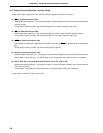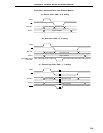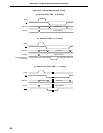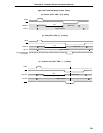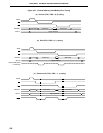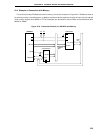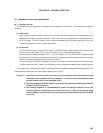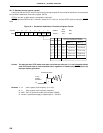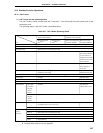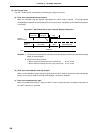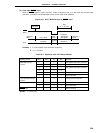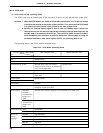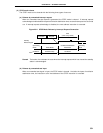525
CHAPTER 23 STANDBY FUNCTION
23.1 Standby Function and Configuration
23.1.1 Standby function
The standby function is designed to decrease power consumption of the system. The following two modes are
available.
(1) HALT mode
HALT instruction execution sets the HALT mode. The HALT mode is intended to stop the CPU operation clock.
System clock oscillator continues oscillation. In this mode, current consumption cannot be decreased as in
the STOP mode. The HALT mode is valid to restart immediately upon interrupt request and to carry out
intermittent operations such as in watch applications.
(2) STOP mode
STOP instruction execution sets the STOP mode. In the STOP mode, the main system clock oscillator stops
and the whole system stops. CPU current consumption can be considerably decreased.
Data memory low-voltage hold (down to V
DD = 1.8 V) is possible. Thus, the STOP mode is effective to hold
data memory contents with ultra-low current consumption. Because this mode can be cleared upon interrupt
request, it enables intermittent operations to be carried out.
However, because a wait time is necessary to secure an oscillation stabilization time after the STOP mode
is cleared, select the HALT mode if it is necessary to start processing immediately upon interrupt request.
In any mode, all the contents of the register, flag and data memory just before standby mode setting are held. The
input/output port output latch and output buffer statuses are also held.
Cautions 1. The STOP mode can be used only when the system operates with the main system clock
(subsystem clock oscillation cannot be stopped). The HALT mode can be used with either
the main system clock or the subsystem clock.
2. When proceeding to the STOP mode, be sure to stop the peripheral hardware operation and
execute the STOP instruction.
3. The following sequence is recommended for power consumption reduction of the A/D
converter when the standby function is used: first clear bit 7 (CS) of A/D converter mode
register (ADM) to 0 to stop the A/D conversion operation, and then execute the HALT or STOP
instruction.




